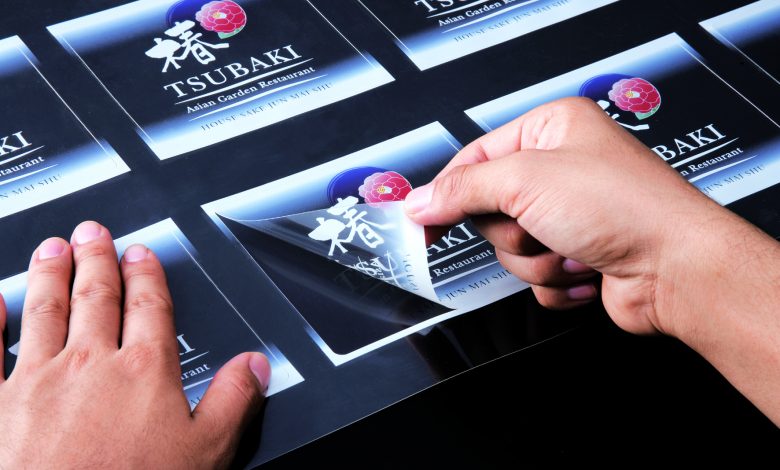On Track to Cutting-Edge Solutions
Find out how innovations in printing/cutting systems are giving shops more options to help automate output/finishing workflows.
Graphics providers are always on the lookout for new printing and cutting solutions to help them provide the latest products and quickest service solutions to meet their clients’ needs. They seek increased automated capabilities and seamless integration into their existing workflows, which will expand the overall versatility of their output/finishing capabilities.
Over the past few years, advances in print and cut technologies have given business owners many different directions they can go as far as equipment options. They include all-in-one printer/cutter units, roll printer and vinyl cutter pairings, as well as a flatbed-printer-to-flatbed-cutter solutions.
Adding the right printer/cutter system to your workflow requires a detailed analysis of your production processes, from the materials being used to the types of applications you are currently producing as well as others you would like to break into in the future.
Workflows are More Integrated
Randy Paar, marketing manager for Display Graphics at Melville, New York-based Canon Solutions America, notes that digital cutting systems are here to stay and over the past five to 10 years have become much more affordable for smaller shops to purchase.
“Printing and cutting workflows are increasingly being integrated to improve production efficiencies and reduce errors and waste. The increasing need to meet shorter and shorter turnaround times is one of the drivers behind improving efficiencies,” Paar explains. “Additionally, improved workflows reduce the dependence on highly skilled, highly paid operators to manage operating the technology.”
Variety of Applications
Mark Rugen, director of product marketing and education for Phoenix, Arizona-based Mutoh America, says that the reason for the growing market is that there are many more application options. “Once the domain of vehicle wraps, now print and cut is used in the home décor, window and wall graphics and specialty items market. Many users are finding more media in addition to vinyl that can be used as well, such as adhesive-backed wall textiles etc. Cutter manufacturers are also creating innovative ways to get a print and cut job done as well. Since most users find that a print first, cut later workflow to be the most practical, cutter drivers are evolving to allow the contour cut registration marks to be found rapidly and accurately, making the registration and cutting process simple.”
Seamless Workflow
Daniel Valade, product manager of Color Products and Cutters at Irvine California-based Roland DGA, reports he is seeing that more print shops are either adding or switching to integrated print/cut devices. “Having the ability to complete jobs that require both printing and cutting, without having to transfer the job from the printer to a separate cutting device, frees up time and helps maximize productivity. Operators can design, prep and print other jobs while the integrated printer runs unattended. Jobs can be sent at night when the shop is closed, and when the shop opens in the morning, an entire roll of print and cut decals (or other applications) can be ready to go.”
UV Options
Jay Roberts, product manager, UV printers (also at Roland DGA) adds, “We are seeing UV print and cut being used more frequently. As most UV printers have gloss and white specialty ink sets, UV is being used to create special effects on print and cut jobs such as raised letters or gloss enhancements.”
Roberts notes that Roland’s VersaUV printer/cutters are extremely popular for packaging prototyping applications. “Our LEC series printer/cutters can print directly onto thinner board stock, including metallic and colored media. Their ability to print metallic is unique and allows customers to not only test prototype, but also to simulate the look of spot metallic colors. This platform is the creative professional’s secret weapon for jobs that require superior image quality and precision contour cutting, even perforated cuts to the most intricate shapes. Our VersaUV LEC series printer/cutters also allow users to create premium textured accents with gloss and white inks for finishes that truly bring designs to life,” he concludes.
Perforated Cutting Feature
Valade points out that advancements in software and hardware, integrated printer/cutters, like those offered in its TrueVIS series, can perform not only print and contour (kiss) cutting but also perforated cutting too. “This is a big advantage when it comes to the finishing process. With this perforated cutting functionality, trimming up jobs that are meant to be individually sold, like decals or heat transfers, is not required. Simply ‘pop’ out the perforated decal and it’s ready for resale.”
Valade says that shops need to do their homework when in the market for a system because every shop is different when it comes to product offerings. “For print service providers (PSPs) where most of the products sold are print-only applications, such as canvas prints, banners, posters, a print-only device paired with a stand-alone vinyl cutter may be a better-suited option than an integrated printer/cutter. When there’s a job that does require contour cutting, RIP software such as Roland VersaWorks 6.0 can generate crop marks that are read by an optical eye, allowing the cutter to detect where the vectors are located for cutting. Integrated printer/cutters offer smaller shops with plenty of jobs that require both printing and cutting an all-in-one device that can not only save time and effort, but also space when it’s limited.”
He explains that the applications for integrated printer/cutters or stand-alone devices are the same for the most part. Popular applications include vehicle graphics/wraps, decals, and heat transfers for apparel and accessories. Banners, posters and POP displays are also popular applications that can be performed on either setup as well.
Roland TrueVIS VG Series
Valade notes that the Roland TrueVIS VG Series continues to be an incredibly popular family of printer/cutters for the company. “The incredibly vivid images at high print speeds, wide color gamut and ease of use are just a few reasons these next-generation inkjets printer/cutters are selling so well. Of course, all Roland printer/cutters come with included Roland VersaWorks 6 RIP software. The performance versus cost ratio on the TrueVIS VG is unparalleled in the industry.”
Valade says for shops looking for a stand-alone printer and cutter; the VersaEXPRESS RF-640 pairs perfectly with the their CAMM-1 GR-640 large-format cutter. “The workflow from one device to the other is incredibly simple when using Roland VersaWorks 6.0. All the user needs to do is drag the job from the printer queue into the cutter queue and hit ‘send.’ Whatever the best solution may be for a PSP, Roland has the devices in its lineup to accommodate those specific needs.”
Finishing Options From Canon
Paar says that combination printer/cutter devices for roll printing applications such as decals have the appeal of being a low-cost solution; however, one has to consider that with one of these systems you are either printing or cutting. “That being said, productivity is roughly half that compared to using two dedicated devices. If the one printer/cutter breaks down, you are totally out of production. This can quickly cost you not only customers but more than what you saved up front on purchasing a combo device.”
Paar notes that matching a roll printer with an X-Y cutter or vinyl contour cutter or matching a rigid board printer with a flatbed cutter seems logical, however, the most versatile solution is to utilize a flatbed cutter together with a wide enough roll-off unit to accommodate your widest roll printer and still be able to cut your 4 x 8-foot boards.
He adds that users can produce pretty much any popular graphics app with the right equipment. For example, such as a flatbed cutter equipped with a router, oscillating knife, kiss-cut, v-cut and drag knives and creasing wheels.
Paar says that when looking to purchase, shops should consider not only what applications they want to finish today but where they see their business going in one, three and five years from now. “It’s generally better to invest in a more capable flatbed cutter as they typically can outlast many printers or printer/cutter devices.”
He adds that Canon Solutions offers a range of finishing solutions and at a range of price points. “These systems satisfy everything from simple X-Y cutting needs with our Fotoba cutters to systems by Colex for our budget-conscious shops purchasing their first flatbed cutter, to highly configurable, highly productive systems like the Océ ProCut and related Océ AutoPilot automation option.”
Print First, Cut Later
Mutoh’s Rugen says that they have always believed in the print first, cut later workflow for shops. “Why? Well, it has to do with using equipment in a busy shop as well as the need for the print to be finished before cutting anyway. When the printer and cutter are separate devices, they can both be used for different jobs simultaneously if necessary. Often, that better suits the daily workflow in a busy shop.”
He continues, “Additionally, for many outdoor applications, the shop will want to protect the print with a laminate, and that will need to be applied before the contour cutting. A shop can accomplish that task anytime and cut any time with a separate cutter and printer workflow. And the cost to have two machines versus an all in one is about the same now but you have much more productivity with two machines,” he explains.
He says that print and cut devices are certainly convenient and for a new user can seem to eliminate the registration skills required when contour cutting. “However, we have found that many users of these devices eventually get a separate cutter anyway when they recognize the possible workflow and maintenance issues. In addition, if the printer should need repair, it can make the cutter unavailable as well and that could result in a workflow stoppage in the shop.”
Rugen adds that a separate printer and cutter allows for devices to be maintained separately. “In addition, when the time comes for upgrades, or if the shop wishes to purchase a different printer, they can still make use of the separate cutter.”
Razor Sharp Solutions from Mutoh
Rugen says for vinyl applications, he recommends the Mutoh ValueJet 628, which is a 24-inch wide printer and when combined with their Mutoh ValueCut 600 30-inch wide cutter, a shop can print and cut almost anything for a number of applications. He adds if a shop needs a wider solution, then the Mutoh ValueJet 1628X alongside the Mutoh ValueCut 1800 cutter can give them up to 64 inches of print and cut capabilities.
“Keep in mind, the ValueCut drivers include a special feature called ‘Cut Through’ that allows for perforations cutting without the need to determine the cut pattern, making the contour cutting and then perforation of an image to form a product that could be given directly to the customer for installation,” he concludes.
Mimaki’s UCJV300 Series
Another major player in this area is Suwanee, Georgia-based Mimaki USA. The company’s UCJV300 Series devices are said to provide more than a simple print and cut experience, which goes beyond extraordinary to deliver a wide range of applications and versatility.
The line features new additions: UCJV300-75, UCJV300-107 and UCJV300-130. These three printers are smaller footprint models with the same operational features of the larger, widely-successful UCJV300-160.
“Mimaki has introduced more cutting-edge technology with the UCJV300 Series printers. These versatile printers not only feature Mimaki’s original UV-LED inks for a wide range of applications, but they also print and cut. The combination of the UCJV300 Series printers with UV-LED inks, open a world of unlimited versatility for Mimaki customers. UCJV300 Series operators can now create anything from general signage, decals, and vehicle wraps with industry-defining warranties to more expansive products, such as canvas prints, flags, banners, back-lits and static clings using layered print technology with white ink,” says Michael Maxwell, senior manager at Mimaki USA.
Each of the print-and-cut machines include the newest version of RasterLink6 Plus software, featuring a four-layer print preview and an ID Cut function that generates registration marks, barcodes with cutting and rotation information and more.















